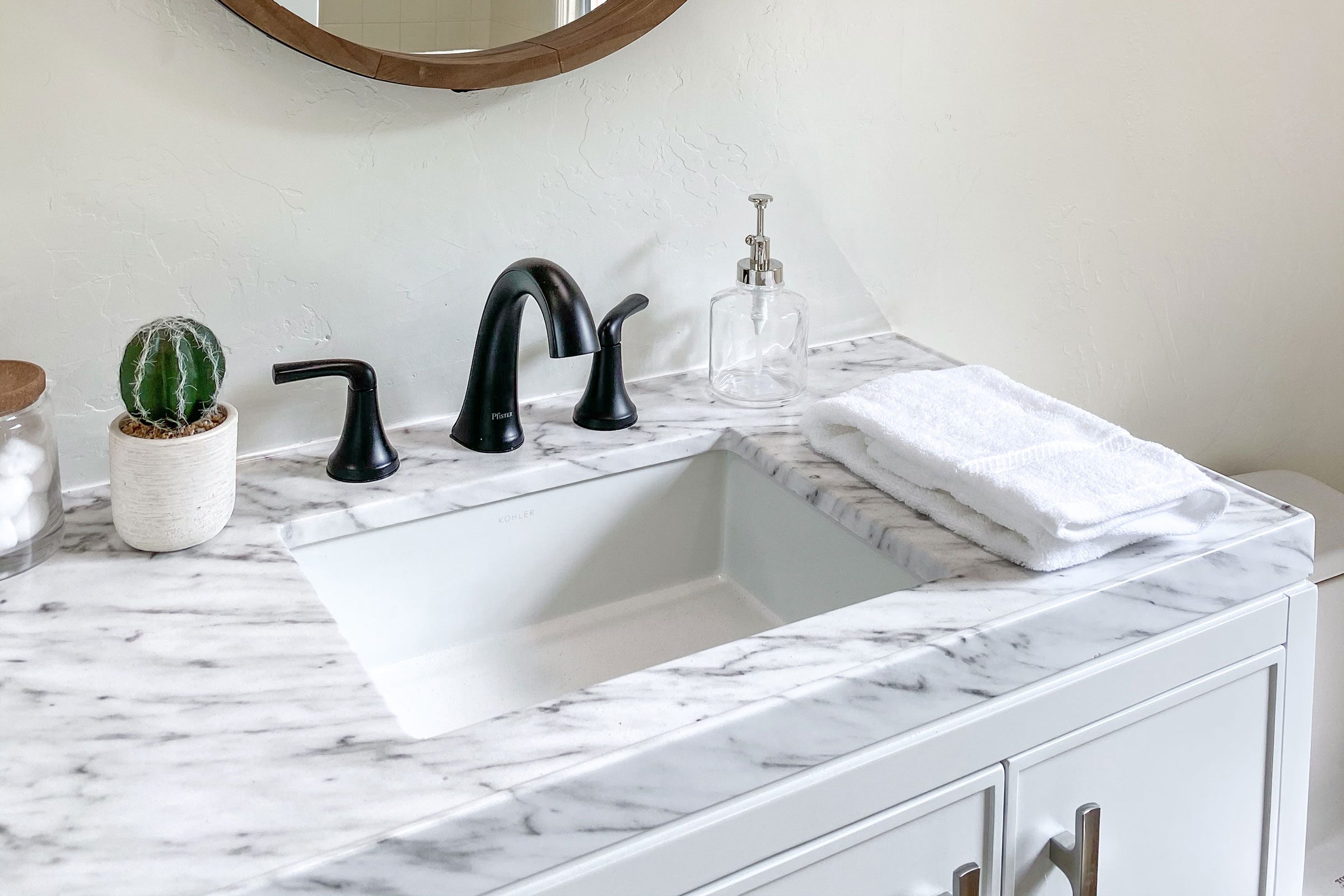Limestone Bathroom Countertops

Limestone is a natural stone that has been used for centuries in building and design. It is a popular choice for bathroom countertops due to its beauty, durability, and affordability.
Limestone Properties
Limestone is a sedimentary rock composed primarily of calcium carbonate. It is formed over millions of years from the accumulation of marine organisms’ shells and skeletons. The properties of limestone that make it suitable for bathroom countertops include its durability, resistance to heat and moisture, and its ability to be polished to a high shine.
Aesthetic Appeal of Limestone, Limestone bathroom countertops pros and cons
Limestone countertops offer a unique and elegant aesthetic. They come in a variety of colors, ranging from creamy white to deep gray, with various veining patterns. The natural variations in color and texture add character and charm to any bathroom. Limestone’s ability to be polished to a high shine creates a luxurious and sophisticated look.
Historical Significance of Limestone
Limestone has been used in architecture and design for thousands of years. It is a common material in ancient buildings, such as the Great Pyramid of Giza and the Parthenon. Limestone’s durability and aesthetic appeal have made it a popular choice for building and design throughout history.
Advantages of Limestone Bathroom Countertops
Limestone countertops offer a blend of durability, beauty, and affordability, making them a popular choice for bathroom renovations. Their natural character and unique veining patterns add a touch of elegance to any space, while their practicality makes them a long-lasting investment.
Durability of Limestone Countertops
Limestone is a naturally occurring stone known for its durability. It is resistant to scratches, heat, and moisture, making it suitable for high-traffic areas like bathrooms.
Limestone’s hardness is rated on the Mohs scale, ranging from 1 to 10, with 1 being the softest and 10 being the hardest. Limestone typically falls between 3 and 4 on this scale, indicating its moderate resistance to scratching.
While limestone is resistant to heat, it’s still advisable to use trivets or coasters to protect the surface from extreme temperatures. Limestone’s porous nature also requires sealing to prevent staining and water damage.
Natural Beauty and Unique Character
Limestone countertops are known for their natural beauty and unique character. The variations in color, texture, and veining patterns create a one-of-a-kind look for each countertop. Limestone’s warm tones and subtle patterns complement a wide range of bathroom styles, from traditional to modern.
Limestone comes in various colors, including beige, cream, gray, and brown, often with intricate veining patterns that add visual interest.
This natural beauty allows for customization, as homeowners can choose from different finishes and edge profiles to match their bathroom design.
Cost-Effectiveness of Limestone
Limestone countertops are generally more cost-effective than other natural stone options like marble or granite.
The average cost of limestone countertops ranges from $40 to $80 per square foot, making it a more affordable choice for homeowners on a budget.
While limestone may require more maintenance than other materials, its affordability and long-lasting durability make it a wise investment.
Disadvantages of Limestone Bathroom Countertops: Limestone Bathroom Countertops Pros And Cons
Limestone is a beautiful and natural stone that adds a touch of elegance to any bathroom. However, it’s important to be aware of the potential drawbacks before making a decision. While limestone countertops offer aesthetic appeal, they also come with certain limitations that require careful consideration.
Porosity and Staining
Limestone is a porous material, meaning it has tiny holes that can absorb liquids. This makes it susceptible to staining, especially from common bathroom substances like wine, coffee, and even water. Spills and splashes can seep into the surface, leaving behind unsightly marks that are difficult to remove.
Regular Sealing and Maintenance
To mitigate the risk of staining, limestone countertops require regular sealing. Sealing creates a protective barrier that prevents liquids from penetrating the stone. However, this sealant needs to be reapplied periodically, typically every 12-24 months, depending on the level of traffic and usage.
Etching and Damage from Acids
Limestone is sensitive to acidic substances. Exposure to acidic cleaners, citrus fruits, or even acidic foods can etch the surface, leaving behind dull marks or even permanent damage. This means that special care must be taken when using cleaning products and handling acidic substances around limestone countertops.
